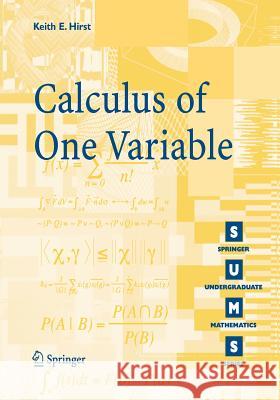Calculus of One Variable » książka
Calculus of One Variable
ISBN-13: 9781852339401 / Angielski / Miękka / 2005 / 268 str.
The development of the di?erential calculus was one of the major achievements of seventeenth century European mathematics, originating in the work of N- ton, Leibniz and others. Integral calculus can be traced back to the work of Archimedes in the third century B. C. Since its inception, calculus has dev- oped in two main directions. One is the growth of applications and associated techniques, indiverse?eldssuchasphysics, engineering, economics, probability and biology. The other direction is that of analytical foundations, where the intuitive and largely geometrical approach is replaced by an emphasis on logic and the development of an axiomatic basis for the real number system whose properties underpin many of the results of calculus. This approach occupied many mathematicians through the eighteenth and nineteenth centuries, c- minating in the work of Dedekind and Cantor, leading into twentieth century developments in Analysis and Topology. We can learn much about calculus by studying its history, and a good starting point is the St Andrews History of Mathematics website www-history. mcs. st-and. ac. uk/history/ Thisbookisdesignedforbeginninguniversitystudents, boththosestudying mathematics as a major subject, and those whose main specialism requires the use and understanding of calculus. In the latter case we would expect that lecturers would customise the treatment with applications from the relevant subject area. Thepre-universityschoolmathematicscurriculaofmostEuropeancountries all include some calculus, and this book is intended to provide, among other things, a transition between school and university calculus. In some countries suchastheU. K











